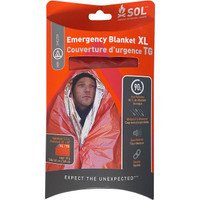Hypothermia
Body temperature regulation is an important consideration, especially in extreme environments. Hyperthermia and hypothermia challenges and risks can be reduced through preparation and fast action.
Hypothermia is always a risk factor for the injured. As many as 50 percent of trauma patients transported by EMS are hypothermic by the time they reach the hospital, according to some reports. Hypothermic trauma patients are less likely to survive their injuries, when compared to similar patients who are normothermic.
In trauma, hypothermia begins when the body's core temperature dips below 36° Celsius (96.8° Fahrenheit). Temperatures between 36°C and 34°C are considered mild; 34°C - 32°C, moderate; and less than 32°C (89.6°F) is considered severe. If the patient begins to shiver, it means that hypothermia has begun to occur. Controlling a patient's body temperature may be as critical as maintaining perfusion pressure in a critically injured patient. During extended extrications, emergency foil blankets (hypothermia blankets) can be very effective in retaining body heat. They are lightweight, inexpensive, easy to store in a jump kit, and can save a life. Simple techniques and materials let EMS providers respond effectively to signs of the onset of hypothermia.

















